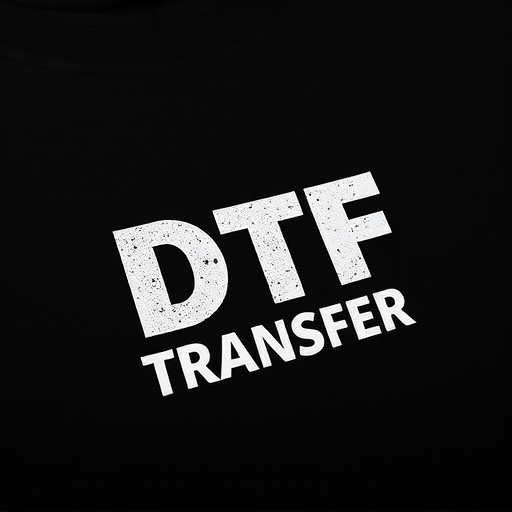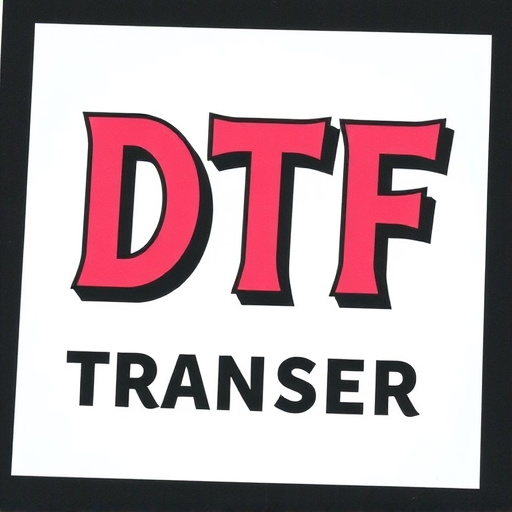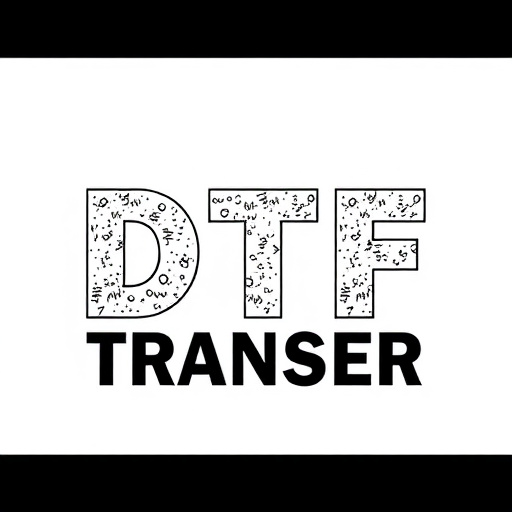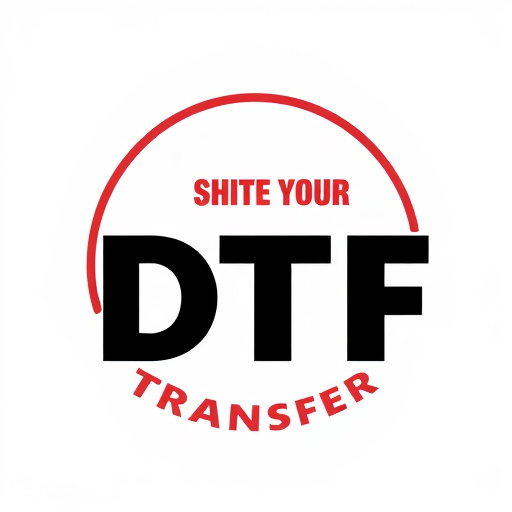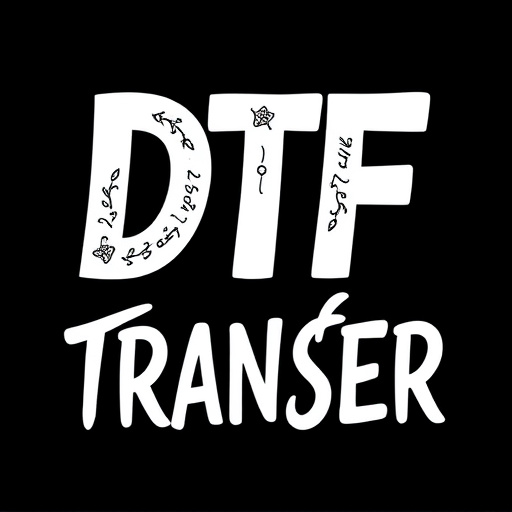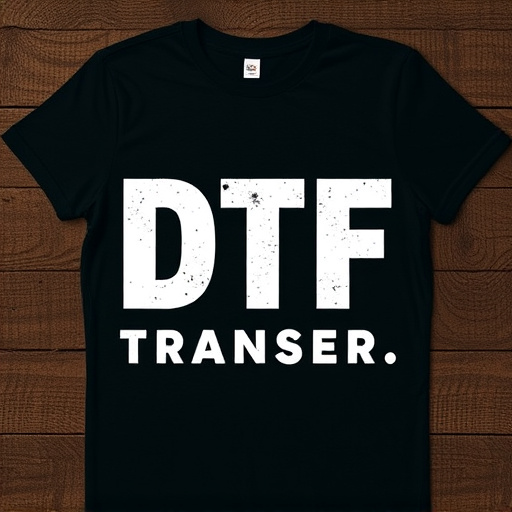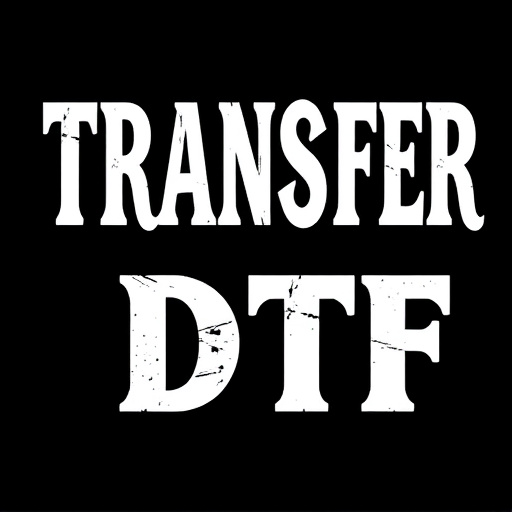Direct-to-film (DTF) transfers are transforming the fashion industry by offering swift, cost-efficient, and high-quality personalization for garments and accessories. DTF technology directly prints vibrant designs onto fabric using digital print heads, eliminating intermediate stages like screen printing. This innovation allows designers to incorporate intricate details and accurate colors into custom artwork or existing graphics, ensuring durability suitable for everyday wear. With DTF transfers, creators can achieve high-quality designs on various fabrics and garments, from t-shirts to hoodies. Choosing the right DTF transfer film, reliable printers, and proper fabric preparation is crucial for optimal results. The trend is driving small batch production, on-demand manufacturing, and unique, customizable garments, particularly in niche markets like streetwear. Businesses can capitalize by offering made-to-order clothing and collaborating with customers on designs.
Direct-to-film (DTF) transfers are transforming custom clothing design, offering a versatile and efficient method for creating unique, on-demand garments. This article delves into the world of DTF technology, exploring its advantages and applications across various clothing items. From understanding the DTF process to choosing the right materials and ensuring quality control, we provide a comprehensive overview. Discover how DTF printing is driving market trends and unlocking business opportunities in the dynamic fashion industry.
- Understanding Direct-to-Film (DTF) Transfers: A Comprehensive Overview
- Advantages of DTF for Custom Clothing Design
- Choosing the Right DTF Materials and Equipment
- Application Techniques for Different Garment Types
- Quality Control and Durability Considerations
- Market Trends and Business Opportunities in DTF Printing
Understanding Direct-to-Film (DTF) Transfers: A Comprehensive Overview

Direct-to-film (DTF) transfers have revolutionized the way we design and personalize clothing items. Unlike traditional printing methods, DTF technology allows for high-quality, vibrant designs to be applied directly onto fabric using a digital print head. This process eliminates the need for intermediate steps like screen printing or heat transfer, making it more efficient and cost-effective. DTF transfers are suitable for various clothing types, from t-shirts and hoodies to hats and bags.
Understanding DTF Transfers involves comprehending their unique benefits. They offer exceptional color accuracy, intricate detail, and a wide range of applicable designs. The technology enables designers to create custom artwork or use existing graphics, ensuring that each piece is uniquely personalized. Moreover, DTF transfers are durable, making them ideal for wearable items meant for everyday use. This comprehensive overview highlights the versatility and advantages of DTF Transfers in the clothing industry.
Advantages of DTF for Custom Clothing Design

Direct-to-film (DTF) printing offers a myriad of advantages for custom clothing design, making it an increasingly popular choice among designers and businesses. One of its key benefits is the ability to produce high-quality, full-color designs directly on various fabric types with precision and speed. This technique allows for intricate patterns, detailed graphics, and vibrant colors, enabling creators to bring their most complex and creative visions to life.
Additionally, DTF transfers provide a cost-effective solution for small batch production or one-off custom pieces. It eliminates the need for expensive set-up costs associated with traditional printing methods, making it accessible to independent designers and small enterprises. This efficiency, combined with the ability to personalize garments down to individual items, ensures that clients receive unique, tailored outfits while maintaining a flexible and affordable process.
Choosing the Right DTF Materials and Equipment

When it comes to Direct-to-Film (DTF) designs, selecting the right materials and equipment is paramount for achieving high-quality prints on various clothing items. The choice of DTF transfer film should align with your desired application, fabric type, and color palette. Look for films offering superior resolution, vibrant colors, and fast drying times to ensure optimal results. Additionally, investing in a reliable DTF printer, ink, and necessary accessories like laminators is crucial. These components work together to deliver precise, long-lasting designs on fabrics like cotton, polyester, and even denim.
Proper preparation of the clothing item is also key. Pre-treating fabrics with appropriate primers ensures better ink adhesion, while careful cleaning and surface treatment help remove impurities that can impede printing quality. With the right materials and equipment in place, DTF technology empowers creators to bring their designs to life on a variety of garments, opening up endless possibilities for customization and self-expression.
Application Techniques for Different Garment Types

Direct-to-film (DTF) transfers offer a versatile approach to designing various clothing items, allowing for unique and personalized garments. The application techniques vary depending on the garment type, ensuring optimal results for each specific material and cut. For t-shirts, the most common DTF method involves using heat press machines to apply the design onto the fabric. This technique is ideal as it allows for intricate details and vibrant colors on cotton or polyester blends.
When designing for hoodies or sweatshirts, a slightly different approach is required due to their thicker fabric structure. Screen printing or digital printing methods are often employed, enabling the placement of designs on various parts of the garment. For instance, front chest graphics, sleeve prints, or even full-back illustrations can be achieved using these techniques, making DTF transfers suitable for creating stylish and expressive outerwear.
Quality Control and Durability Considerations

Direct-to-film (DTF) transfers offer an exciting avenue for clothing designers, but quality control and durability are essential considerations. When implementing DTF printing, it’s crucial to ensure the ink used meets high standards to withstand the rigors of garment production. The longevity of the design is vital, especially for items that will be worn frequently and washed regularly.
Regular testing and inspection procedures should be in place to guarantee colorfastness and resistance to fading or cracking over time. Proper care instructions provided to customers can also extend the life of DTF-designed garments. This includes guidance on washing, drying, and ironing techniques tailored to the specific printing method used.
Market Trends and Business Opportunities in DTF Printing

The Direct-to-Film (DTF) printing trend is transforming the apparel industry, offering vast market opportunities for designers and businesses alike. This innovative technique allows for intricate and personalized designs to be directly applied onto various clothing items, enabling small batch production and on-demand manufacturing. The rise of DTF Transfer technology has captivated both consumers and brands, driving market demand for unique, customizable garments.
With the increasing preference for expressive, individual styles, DTF Printing provides an avenue for creators to bring their artistic visions to life. This method is particularly appealing for niche markets, such as streetwear, where limited-edition pieces and collaborations are highly sought after. Businesses can leverage this trend by offering made-to-order clothing, allowing customers to co-create designs and ensuring a competitive edge in the market. The versatility of DTF Transfer opens up possibilities for diverse products, from t-shirts and hoodies to accessories, bags, and even home decor, creating a thriving ecosystem of creative opportunities.

